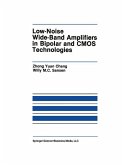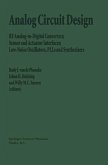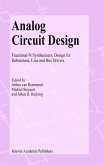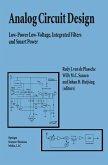Analog circuit design has grown in importance because so many circuits cannot be realized with digital techniques. Examples are receiver front-ends, particle detector circuits, etc. Actually, all circuits which require high precision, high speed and low power consumption need analog solutions. High precision also needs low noise. Much has been written already on low noise design and optimization for low noise. Very little is available however if the source is not resistive but capacitive or inductive as is the case with antennas or semiconductor detectors. This book provides design techniques for these types of optimization. This book is thus intended firstly for engineers on senior or graduate level who have already designed their first operational amplifiers and want to go further. It is especially for engineers who do not want just a circuit but the best circuit. Design techniques are given that lead to the best performance within a certain technology. Moreover, this is done for all important technologies such as bipolar, CMOS and BiCMOS. Secondly, this book is intended for engineers who want to understand what they are doing. The design techniques are intended to provide insight. In this way, the design techniques can easily be extended to other circuits as well. Also, the design techniques form a first step towards design automation. Thirdly, this book is intended for analog design engineers who want to become familiar with both bipolar and CMOS technologies and who want to learn more about which transistor to choose in BiCMOS.








